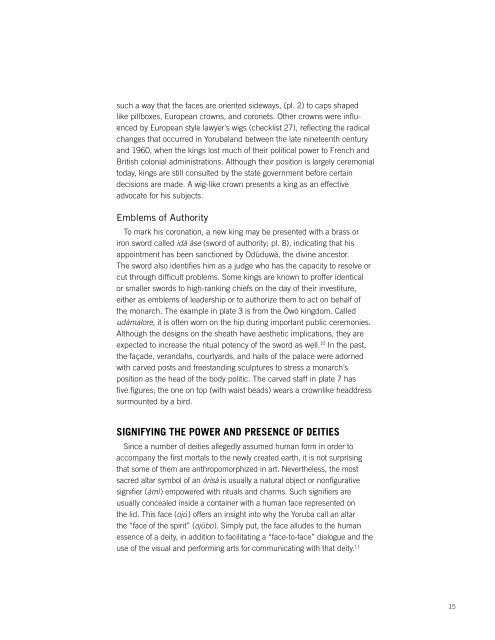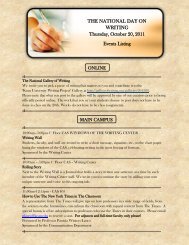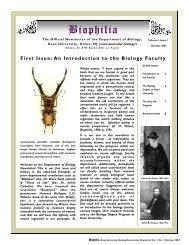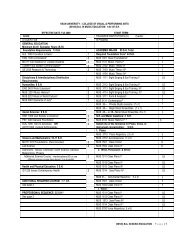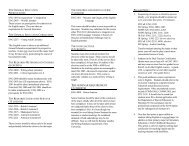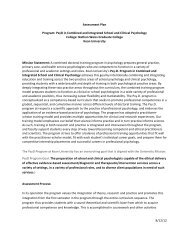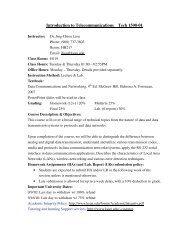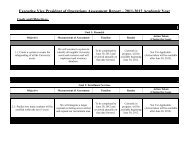Embodying the Sacred in Yoruba Art - Kean University
Embodying the Sacred in Yoruba Art - Kean University
Embodying the Sacred in Yoruba Art - Kean University
Create successful ePaper yourself
Turn your PDF publications into a flip-book with our unique Google optimized e-Paper software.
such a way that <strong>the</strong> faces are oriented sideways, (pl. 2) to caps shaped<br />
like pillboxes, European crowns, and coronets. O<strong>the</strong>r crowns were <strong>in</strong>fluenced<br />
by European style lawyer’s wigs (checklist 27), reflect<strong>in</strong>g <strong>the</strong> radical<br />
changes that occurred <strong>in</strong> <strong>Yoruba</strong>land between <strong>the</strong> late n<strong>in</strong>eteenth century<br />
and 1960, when <strong>the</strong> k<strong>in</strong>gs lost much of <strong>the</strong>ir political power to French and<br />
British colonial adm<strong>in</strong>istrations. Although <strong>the</strong>ir position is largely ceremonial<br />
today, k<strong>in</strong>gs are still consulted by <strong>the</strong> state government before certa<strong>in</strong><br />
decisions are made. A wig-like crown presents a k<strong>in</strong>g as an effective<br />
advocate for his subjects.<br />
Emblems of Authority<br />
To mark his coronation, a new k<strong>in</strong>g may be presented with a brass or<br />
iron sword called idà àse (sword of authority; pl. 8), <strong>in</strong>dicat<strong>in</strong>g that his<br />
appo<strong>in</strong>tment has been sanctioned by Odùduwà, <strong>the</strong> div<strong>in</strong>e ancestor.<br />
The sword also identifies him as a judge who has <strong>the</strong> capacity to resolve or<br />
cut through difficult problems. Some k<strong>in</strong>gs are known to proffer identical<br />
or smaller swords to high-rank<strong>in</strong>g chiefs on <strong>the</strong> day of <strong>the</strong>ir <strong>in</strong>vestiture,<br />
ei<strong>the</strong>r as emblems of leadership or to authorize <strong>the</strong>m to act on behalf of<br />
<strong>the</strong> monarch. The example <strong>in</strong> plate 3 is from <strong>the</strong> Òwò k<strong>in</strong>gdom. Called<br />
udàmalore, it is often worn on <strong>the</strong> hip dur<strong>in</strong>g important public ceremonies.<br />
Although <strong>the</strong> designs on <strong>the</strong> sheath have aes<strong>the</strong>tic implications, <strong>the</strong>y are<br />
expected to <strong>in</strong>crease <strong>the</strong> ritual potency of <strong>the</strong> sword as well. 10 In <strong>the</strong> past,<br />
<strong>the</strong> façade, verandahs, courtyards, and halls of <strong>the</strong> palace were adorned<br />
with carved posts and freestand<strong>in</strong>g sculptures to stress a monarch’s<br />
position as <strong>the</strong> head of <strong>the</strong> body politic. The carved staff <strong>in</strong> plate 7 has<br />
five figures; <strong>the</strong> one on top (with waist beads) wears a crownlike headdress<br />
surmounted by a bird.<br />
SIGNIFYING The PoWer aND PreSeNCe oF DeITIeS<br />
S<strong>in</strong>ce a number of deities allegedly assumed human form <strong>in</strong> order to<br />
accompany <strong>the</strong> first mortals to <strong>the</strong> newly created earth, it is not surpris<strong>in</strong>g<br />
that some of <strong>the</strong>m are anthropomorphized <strong>in</strong> art. Never<strong>the</strong>less, <strong>the</strong> most<br />
sacred altar symbol of an òrìsà is usually a natural object or nonfigurative<br />
signifier (àmì) empowered with rituals and charms. Such signifiers are<br />
usually concealed <strong>in</strong>side a conta<strong>in</strong>er with a human face represented on<br />
<strong>the</strong> lid. This face (ojú ) offers an <strong>in</strong>sight <strong>in</strong>to why <strong>the</strong> <strong>Yoruba</strong> call an altar<br />
<strong>the</strong> “face of <strong>the</strong> spirit” (ojúbo). Simply put, <strong>the</strong> face alludes to <strong>the</strong> human<br />
essence of a deity, <strong>in</strong> addition to facilitat<strong>in</strong>g a “face-to-face” dialogue and <strong>the</strong><br />
use of <strong>the</strong> visual and perform<strong>in</strong>g arts for communicat<strong>in</strong>g with that deity. 11<br />
15


